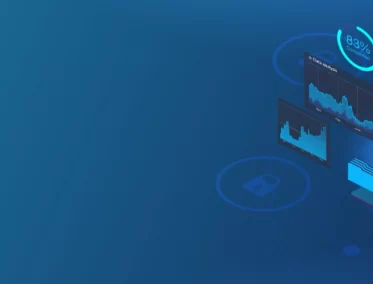Think of Microsoft Fabric as your all-in-one hub for data. Instead of juggling different tools for storage, transformation, and analysis, Fabric brings it all together in one place. You can pull in raw data from any source, store it securely, and get it ready for analysis without the hassle of switching platforms. Plus, with built-in services and seamless integration with tools like Power BI, you can easily turn that data into clear, actionable insights. The best part? It’s designed for everyone—from data scientists to business users—so collaboration becomes natural and workflows feel effortless. In short, Fabric helps organizations cut through the complexity and truly unlock the power of their data.
Key Takeaways
|
Why You Need Microsoft Fabric
Every business today is drowning in data coming in from apps, devices, customer touchpoints, and more. The real struggle isn’t gathering all this data, it’s actually putting it to use. Too often, companies end up relying on a mix of different tools for storage, transformation, analysis, and reporting. The result? Data silos, wasted time, higher costs, and teams spending more effort managing tools than extracting real insights. That makes it harder and slower to make confident, data-driven decisions.
This is exactly the gap Microsoft Fabric is designed to fill. Instead of bouncing between systems, Fabric pulls everything into one place. You can ingest, store, transform, analyze, and visualize your data all within a single platform. It creates a shared space where business users, analysts, and data scientists can work together without friction. That means less complexity, faster insights, and more time spent using data to drive growth. As your data keeps growing, Fabric scales along with it, making it a smart, future-ready solution for any organization looking to unlock the full value of its data.
Key Features of Microsoft Fabric
End-to-End Analytics
Traditionally, a data pipeline involves using separate tools for different stages such as data ingestion, storage, transformation, analysis, and visualization. Fabric integrates these functions into a single platform and enables end-to-end analytics. It allows you to bring in raw data from various sources, clean and transform it, and then analyze it using different tools within Fabric. Finally, you can create insightful reports and dashboards to communicate insights.
Integrated Services
Fabric breaks down data silos by combining services like Azure Data Factory (for data movement and transformation), Azure Data Lake Storage (for storing raw data), Azure Synapse Analytics (for data warehousing and analytics), and Power BI (for data visualization). This unified environment makes data workflows smoother and encourages collaboration between different teams working on data projects.
Lakehouse Support
Fabric bridges the gap between data lakes and data warehouses with a lakehouse architecture. It stores data in a data lake format but allows you to query and analyze it using familiar SQL structures, offering the best of both worlds.
Spark Integration
Fabric seamlessly integrates with Apache Spark clusters, enabling you to leverage its capabilities for complex data transformations and analytics on massive datasets. This is particularly beneficial for organizations dealing with big data.
Data Factory
Data Factory serves as the workhorse for data movement and transformation within Fabric. It allows you to create automated data pipelines that efficiently move data from various sources to your designated storage location within the platform. Data Factory also enables data transformations, such as cleaning, filtering, and formatting before analysis.
Data Warehousing
Fabric allows you to build and manage data warehouses for structured data analysis. These warehouses store data in a structured format, making it efficient to run complex queries and analyses using SQL, a common query language for relational databases. This functionality is particularly valuable for scenarios requiring in-depth data exploration and historical analysis.
Data Visualization with Power BI
By integrating Power BI with Fabric, you can leverage its intuitive interface to create interactive data visualizations that make data insights clear and easily understandable for both technical and non-technical audiences.
Microsoft Fabric Benefits
The Microsoft Fabric platform offers numerous benefits for organizations seeking to leverage their data effectively. Let’s take a closer look at how each advantage can enhance your business:
Simplified Data Management
Traditionally, data management involves using multiple tools and platforms for tasks such as data storage, integration, and analysis. Fabric simplifies this process by providing a centralized platform for all data activities. This streamlined approach results in:
Reduced Costs: By eliminating the need to manage and maintain multiple data tools, Fabric can lead to cost savings on licenses and infrastructure.
Increased Efficiency: Data professionals can focus on analysis and insights rather than dealing with data management across different systems.
Improved Data Governance: Centralized data storage and management within Fabric makes it easier to implement data governance policies and ensure data security and compliance.
Enhanced Collaboration
Data projects often require collaboration between data analysts, data scientists, and business users. Fabric promotes this collaboration by offering a common platform where everyone can access and work with the data. This leads to:
Shared Understanding: All project participants can access the same data and tools, fostering a shared understanding of the information and analysis.
Improved Communication: A unified platform facilitates better communication and knowledge sharing between technical and non-technical teams.
Faster Decision Making: Streamlined collaboration allows teams to analyze data, extract insights, and make data-driven decisions more quickly.
Faster Time to Insights
Organizations are under pressure to make data-driven decisions rapidly. Here’s how Fabric helps you achieve faster insights:
Automated Data Pipelines: Fabric’s Data Factory automates data movement and transformation tasks, saving valuable time.
Seamless Analytics Integration: Fabric’s built-in analytics tools and services readily analyze data, helping you derive insights faster.
Self-Service Analytics: Power BI’s user-friendly interface empowers non-technical users to explore data and generate basic reports independently.
Scalability for Growth
Data volume is continually increasing for most businesses. Fabric’s architecture is designed to scale and accommodate this growth. Here’s how it benefits you:
Elastic Cloud Infrastructure: Fabric leverages Microsoft Azure’s cloud infrastructure, which scales automatically to meet your data storage and processing needs.
Pay-as-you-go Model: The cloud-based model allows you to pay only for the resources you use, making it cost-effective for businesses of all sizes.
Future-proof Platform: Fabric can adapt and grow with your organization as your data needs evolve.
Flexibility for All Users
Data expertise varies within organizations. Fabric caters to this diverse range of users with its flexible functionalities:
User-friendly Interfaces: Power BI and other integrated tools offer intuitive interfaces for non-technical users to explore data and generate basic reports.
Advanced Analytics Capabilities: Data scientists have access to powerful tools and services like Apache Spark integration for complex data analysis and manipulation.
Openness and Interoperability: Fabric integrates with various third-party tools and data sources, providing flexibility for specific needs.
Frequently Asked Questions (FAQs)
Q1. What is Microsoft Fabric?
It’s an all-in-one data platform that unifies ingestion, storage, transformation, analysis, and visualization, so you don’t need multiple separate tools.
Q2. Why do organizations need it?
Data is often scattered across platforms, creating silos and inefficiencies. Fabric centralizes everything, making data management simpler, faster, and more cost-effective.
Q3. Who benefits from Microsoft Fabric?
Everyone, from business users creating reports in Power BI to data scientists using Spark for advanced analytics.
Q4. How does it streamline workflows?
Fabric integrates services like Azure Data Factory, Synapse, Data Lake, and Power BI, so teams can move from raw data to insights without tool-switching.
Q5. What role does Power BI play?
Power BI is built into Fabric, making it easy to create interactive dashboards and share insights across technical and non-technical teams.
Q6. Does it support big data and lakehouse architecture?
Yes. Fabric integrates with Apache Spark for large-scale analytics and supports a lakehouse model that combines the flexibility of lakes with the performance of warehouses.
Q7. What are the main benefits?
Simplified management, lower costs, stronger governance, faster insights, seamless collaboration, and cloud-based scalability.




